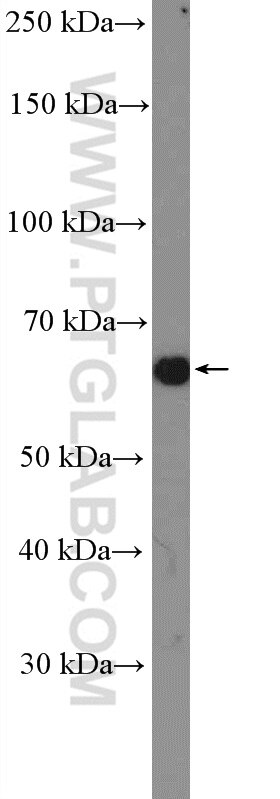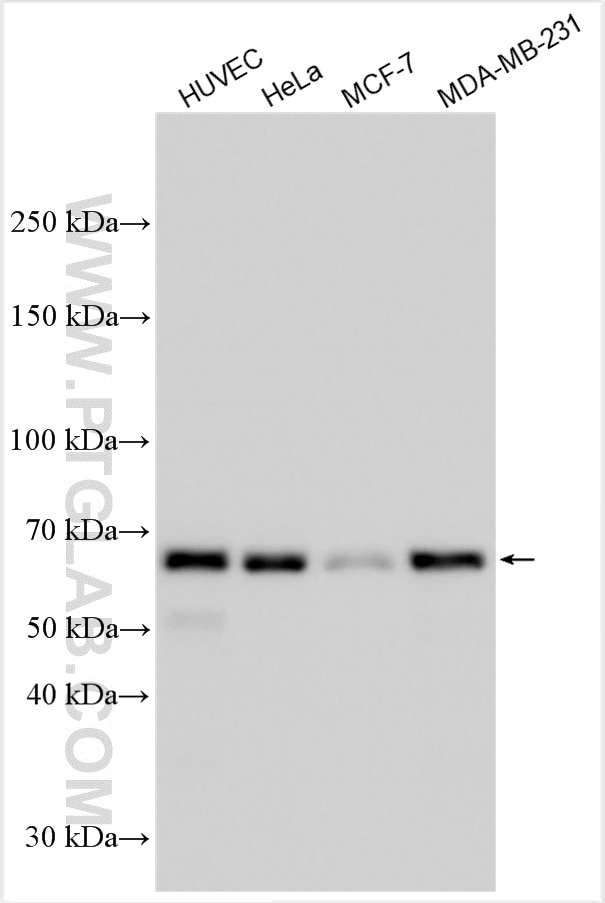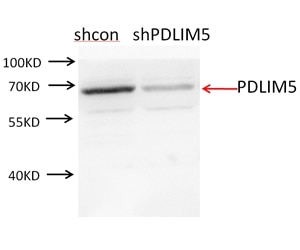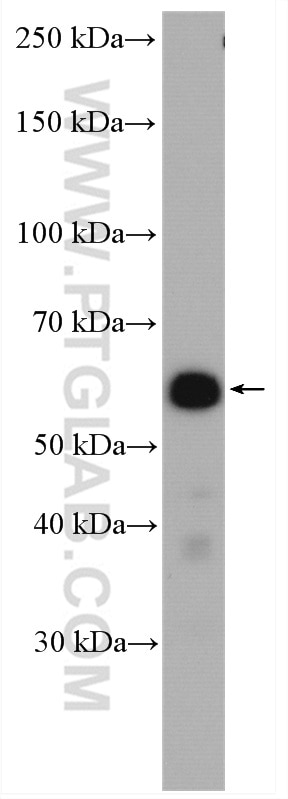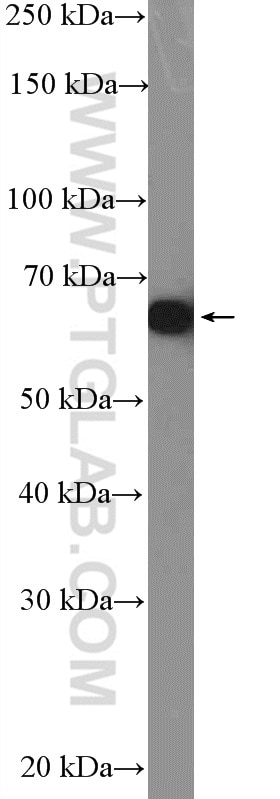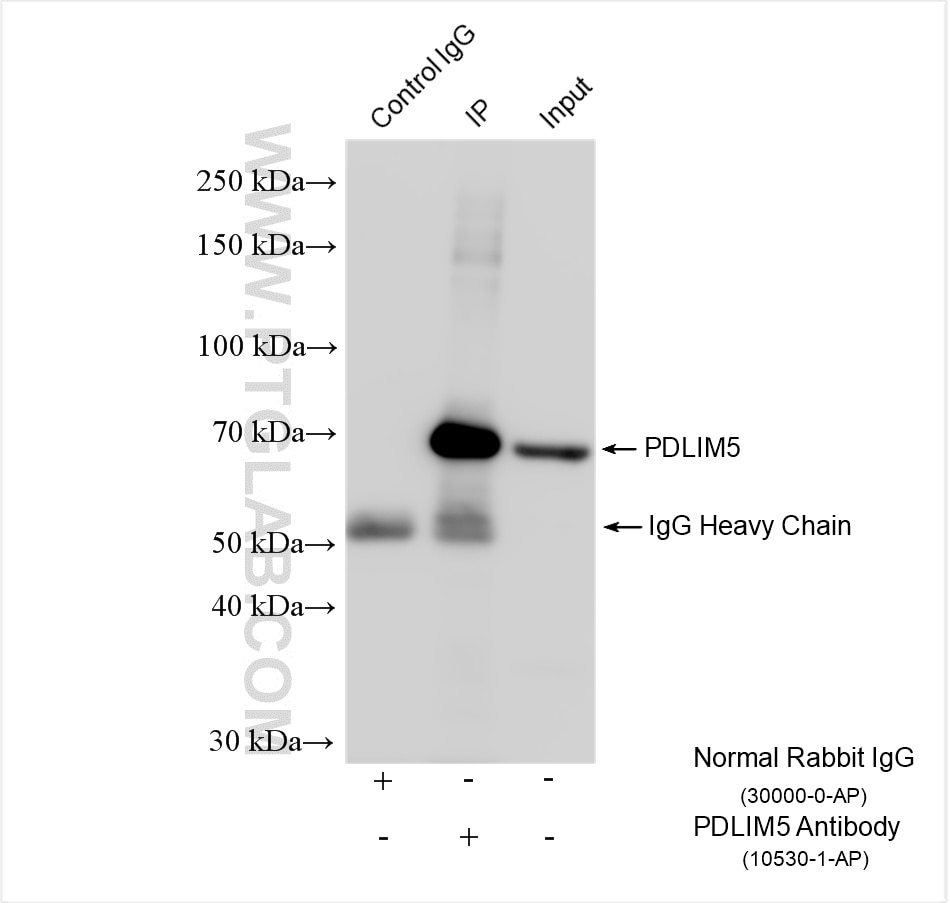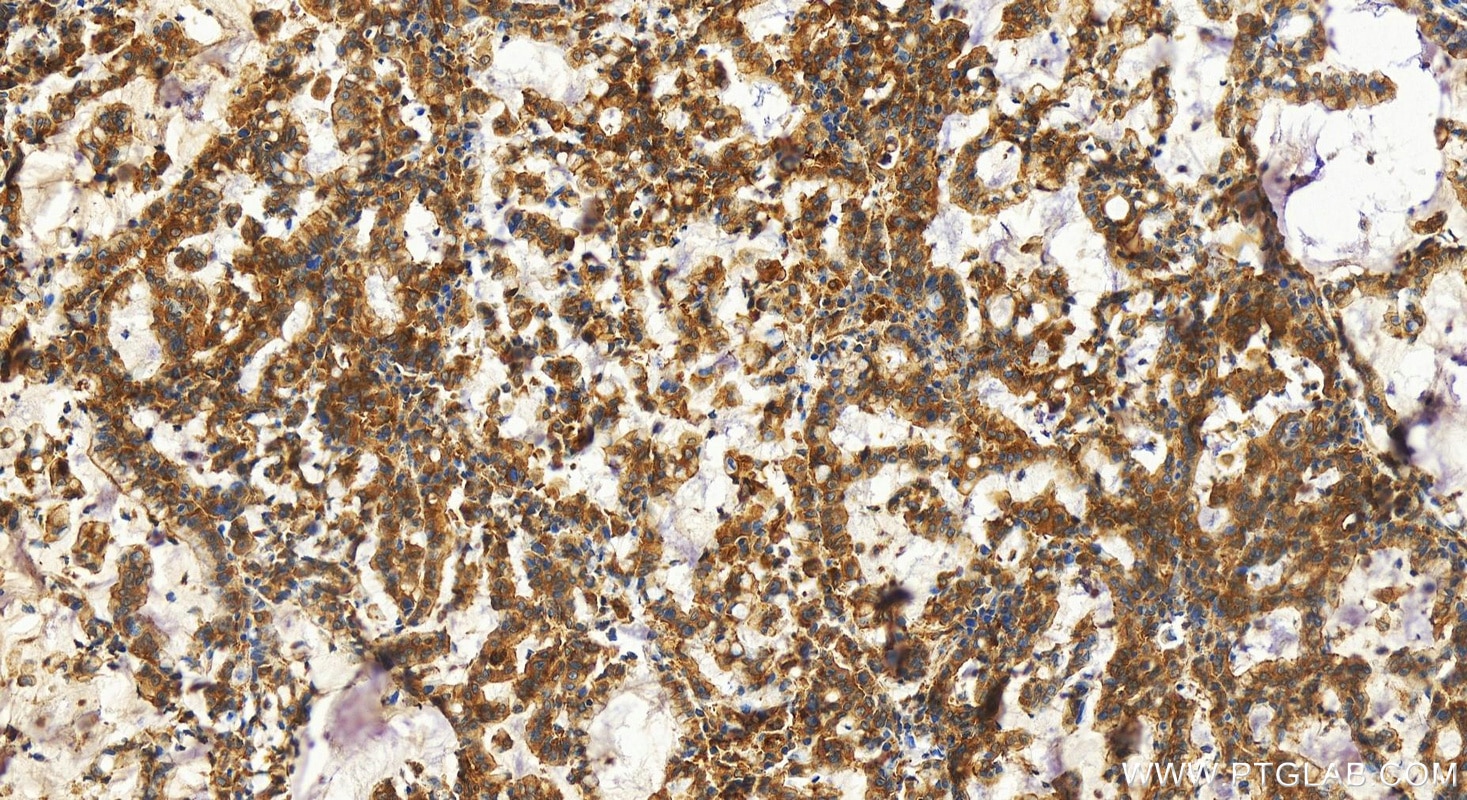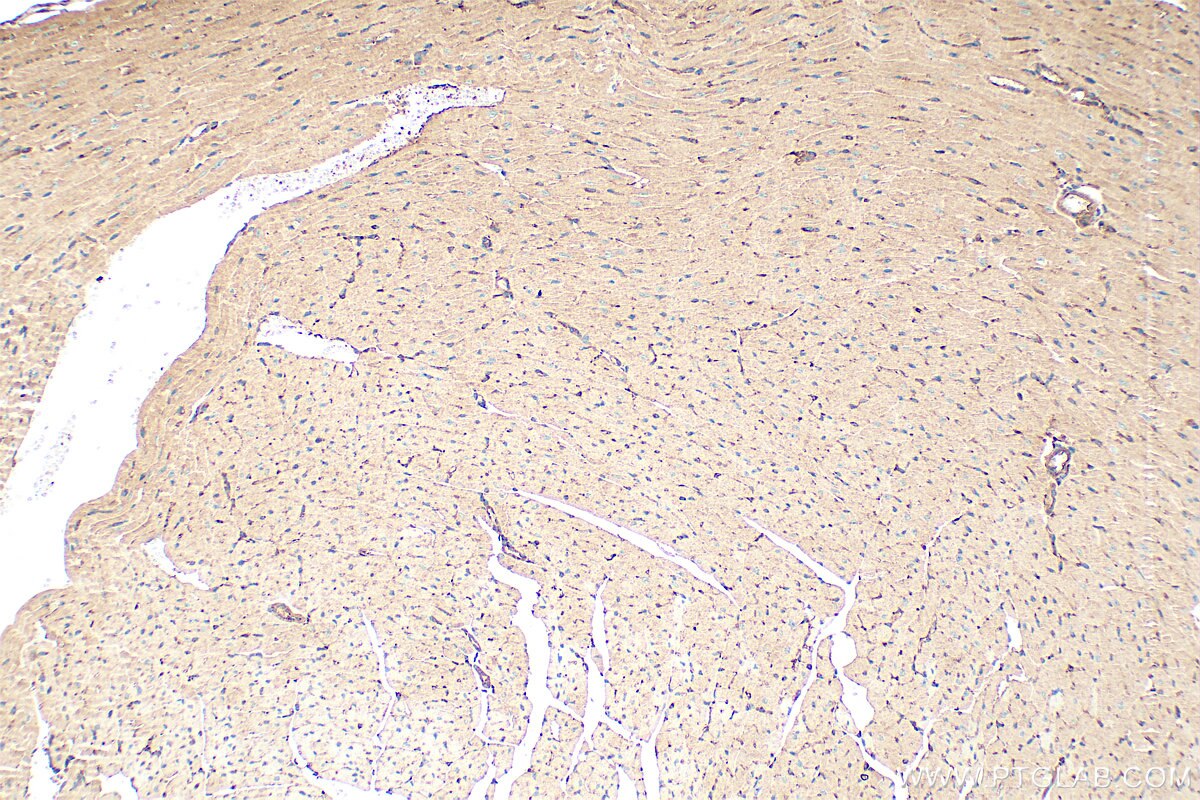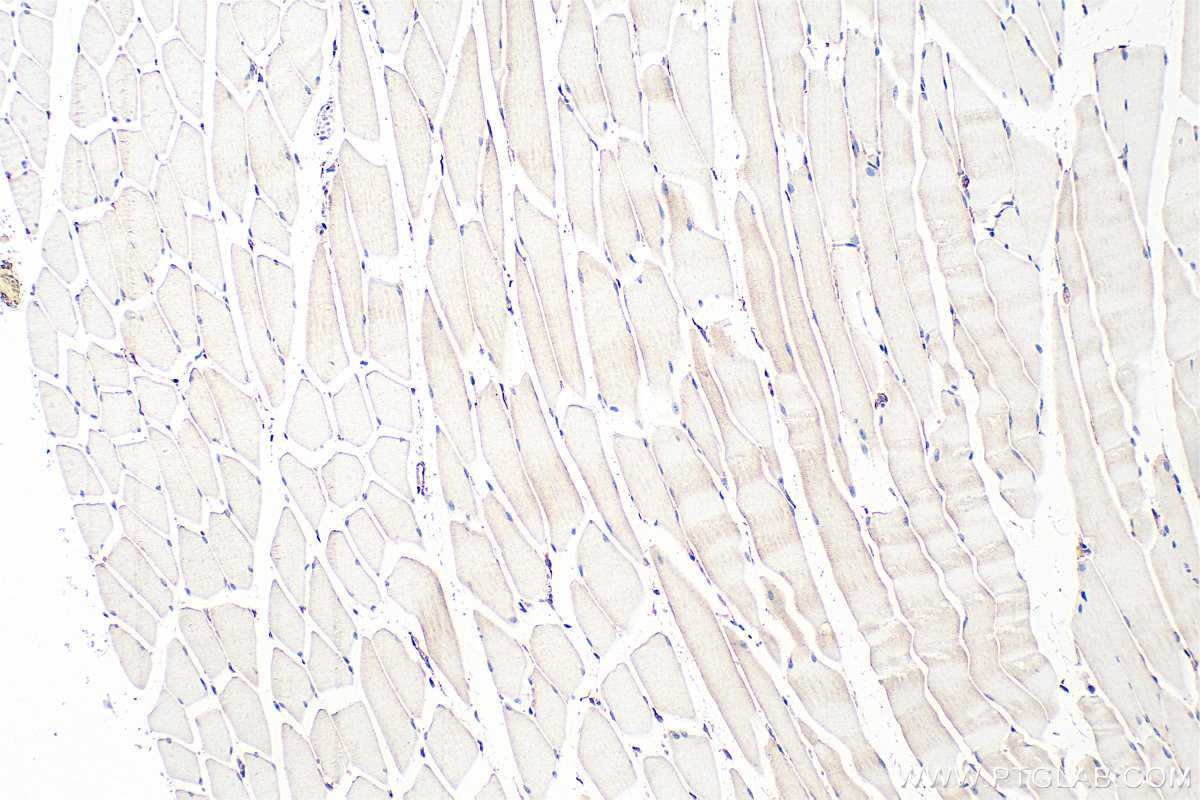- Phare
- Validé par KD/KO
Anticorps Polyclonal de lapin anti-PDLIM5
PDLIM5 Polyclonal Antibody for WB, IHC, IP, ELISA
Hôte / Isotype
Lapin / IgG
Réactivité testée
Humain, souris et plus (1)
Applications
WB, IHC, IF, IP, ELISA
Conjugaison
Non conjugué
N° de cat : 10530-1-AP
Synonymes
Galerie de données de validation
Applications testées
| Résultats positifs en WB | cellules HUVEC, cellules A549, cellules HeLa, cellules MCF-7, cellules MDA-MB-231, cellules NIH/3T3 |
| Résultats positifs en IP | cellules HeLa, |
| Résultats positifs en IHC | tissu de cancer de l'estomac humain, tissu cardiaque de souris, tissu de muscle squelettique de souris il est suggéré de démasquer l'antigène avec un tampon de TE buffer pH 9.0; (*) À défaut, 'le démasquage de l'antigène peut être 'effectué avec un tampon citrate pH 6,0. |
Dilution recommandée
| Application | Dilution |
|---|---|
| Western Blot (WB) | WB : 1:2000-1:16000 |
| Immunoprécipitation (IP) | IP : 0.5-4.0 ug for 1.0-3.0 mg of total protein lysate |
| Immunohistochimie (IHC) | IHC : 1:50-1:500 |
| It is recommended that this reagent should be titrated in each testing system to obtain optimal results. | |
| Sample-dependent, check data in validation data gallery | |
Applications publiées
| KD/KO | See 5 publications below |
| WB | See 10 publications below |
| IHC | See 2 publications below |
| IF | See 3 publications below |
| IP | See 2 publications below |
Informations sur le produit
10530-1-AP cible PDLIM5 dans les applications de WB, IHC, IF, IP, ELISA et montre une réactivité avec des échantillons Humain, souris
| Réactivité | Humain, souris |
| Réactivité citée | rat, Humain, souris |
| Hôte / Isotype | Lapin / IgG |
| Clonalité | Polyclonal |
| Type | Anticorps |
| Immunogène | PDLIM5 Protéine recombinante Ag0808 |
| Nom complet | PDZ and LIM domain 5 |
| Masse moléculaire calculée | 64 kDa |
| Poids moléculaire observé | 63-68 kDa |
| Numéro d’acquisition GenBank | BC008741 |
| Symbole du gène | PDLIM5 |
| Identification du gène (NCBI) | 10611 |
| Conjugaison | Non conjugué |
| Forme | Liquide |
| Méthode de purification | Purification par affinité contre l'antigène |
| Tampon de stockage | PBS with 0.02% sodium azide and 50% glycerol |
| Conditions de stockage | Stocker à -20°C. Stable pendant un an après l'expédition. L'aliquotage n'est pas nécessaire pour le stockage à -20oC Les 20ul contiennent 0,1% de BSA. |
Informations générales
PDLIM5 (PDZ and LIM domain 5), formerly known as enigma homolog (ENH), is a cytoplasmic protein containing PDZ domain and LIM domain at N terminus and C terminus, respectively. PDLIM5 gene generates several splicing variants, EZH1 to EZH4. The long isoform, ENH1, is widely expressed in various tissues including heart, brain, spleen, liver and kidney. In comparison, shorter isoforms that lack the LIM motifs are expressed in cardiac (ENH3) and skeletal muscle (ENH2, ENH3, and ENH4). ENH1 is essential for differentiation of striated muscles through interaction with other proteins. In addition, PDLIM5 is also involved in mood disorders, such as schizophrenia, bipolar disorder, and major depression. This antibody is specific to PDLIM5, and its specificity has been confirmed by siRNA test.
Protocole
| Product Specific Protocols | |
|---|---|
| WB protocol for PDLIM5 antibody 10530-1-AP | Download protocol |
| IHC protocol for PDLIM5 antibody 10530-1-AP | Download protocol |
| IP protocol for PDLIM5 antibody 10530-1-AP | Download protocol |
| Standard Protocols | |
|---|---|
| Click here to view our Standard Protocols |
Publications
| Species | Application | Title |
|---|---|---|
Cell Death Differ MicroRNA-17-92 regulates myoblast proliferation and differentiation by targeting the ENH1/Id1 signaling axis.
| ||
Oncotarget High expression of PDLIM5 facilitates cell tumorigenesis and migration by maintaining AMPK activation in prostate cancer.
| ||
Drug Deliv Ultrasound-sensitive siRNA-loaded nanobubbles fabrication and antagonism in drug resistance for NSCLC. | ||
J Mol Cell Cardiol Extracellular vesicular MicroRNA-27a* contributes to cardiac hypertrophy in chronic heart failure.
| ||
Chem Biol Drug Des si-RNA mediated knockdown of PDLIM5 suppresses gastric cancer cell proliferation in vitro.
| ||
Sci Rep Actin cable formation and epidermis-dermis positional relationship during complete skin regeneration |
